2018 was a very exciting year in 3D Printing. If we look at the big trends we can see the rise of startups with tens of millions in investment, market entry by multibillion-dollar companies especially polymer companies and increased automation. In the background, we can see the very public fading of the desktop printer on every desktop dream but the new realization that 3D printing might be suited for manufacturing. Overall 2018 was a year of professionalization with everyone focusing on higher-end products and end-use applications. And 2018 was the year of centers for excellence for 3D printing. The Starbucks of our world.
For 3DPrint.com there was a shakeup in our pantheon of writers, renewed long-term partnerships with industry leaders and a focus on quality. With higher quality articles, fact-checking, more analysis and scrutiny we seem to have become less popular with certain companies. But, the higher quality seems to appeal to those who count, our readers. They’ve repeatably reached out to us to give us feedback and thank us for our new path. Our pageviews and unique visitors have also increased substantially during the period validating our approach. In tandem we have found new advertisers and industry partners who appreciate this new more difficult but more rewarding path. For this and your continued support, we’d like to thank you for a fantastic year in 2018.
Below is a selection of our news over these past months. We couldn’t possibly expect to filter out the most significant news items because this would be subjective. Instead, we’ve made a selection out of our most popular news stories and those that were very important or those that were oft-recurring or indicative of bigger trends and movements in our industry. Is your story missing? Maybe I forgot it! Add it below in the comments.
January
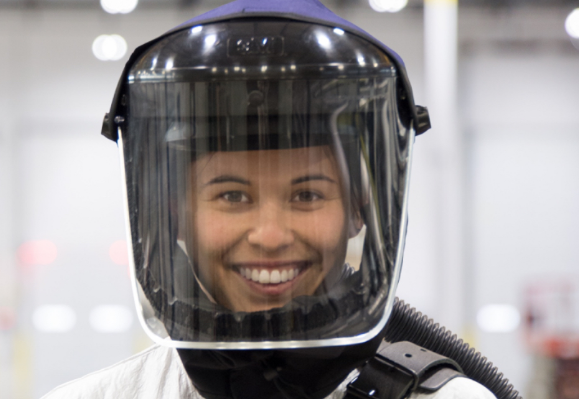
A happy GE Engineer (lets hope that PPE becomes a trend in 2019)
GE Engineers learn, iterate and grow through 3D printing.
The year started with Sciaky reporting record metal 3D printer sales for the previous month. This would be a leitmotiv for the year with metal sales, investment and commercialization exploding. This year ten times more industrial metal printers were sold than a few years ago.
3D Systems and Stryker partner for surgical planning, a growing area.
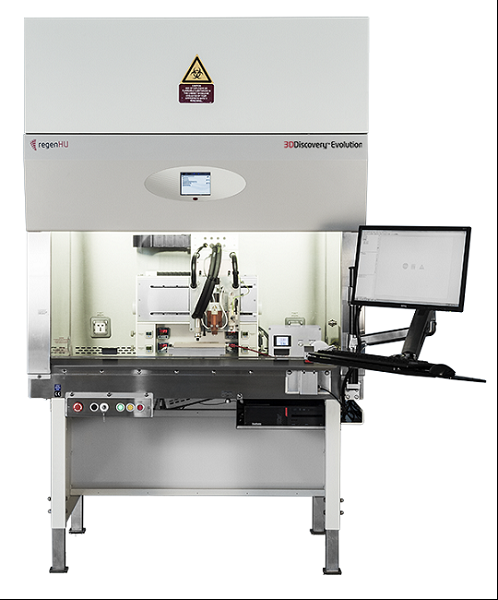
The RegenHU Biofactory, sterile 3D printing inside a laminar flow cabinet. Cray cray.
Bioprinting promoted in the US by RegenHU and Wako.
Auroralabs partner and they’re not the last to partner this year.
February
Addidas and Carbon print shoes.
Stoke med reports advances in patient-specific models. Patient-specific medical applications were on the rise throughout the year with patient-specific solutions being developed in polymers and metals for ortho but also things such as braces.
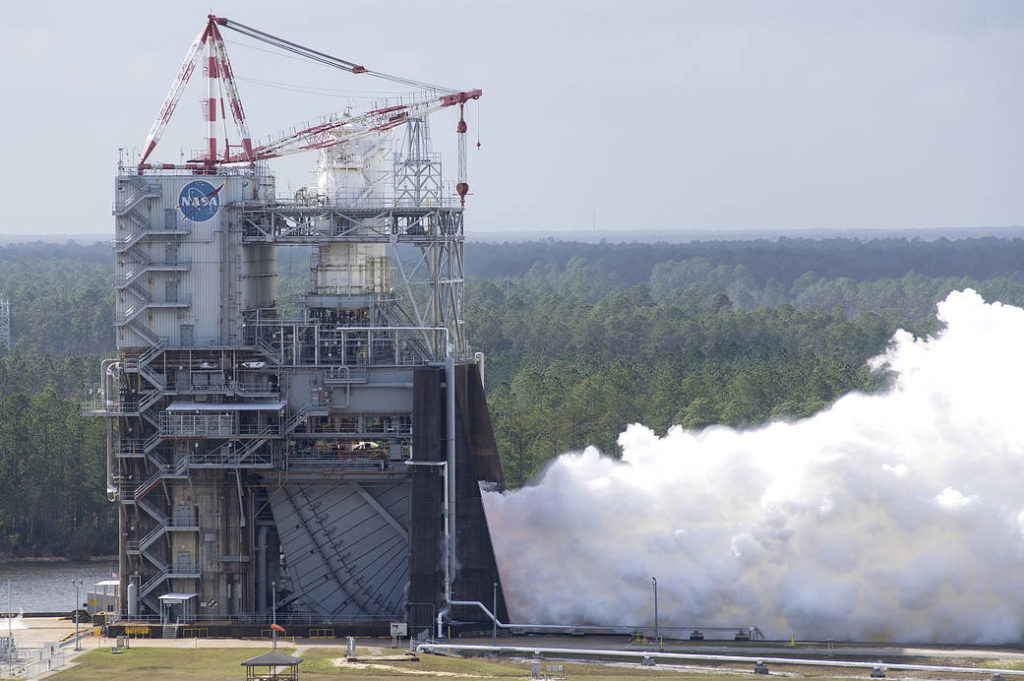
(photo credit: NASA)
NASA tests 3D printed RS engines.
BASF partners with Farsoon and BigRep. Materials giant BASF is investing heavily in 3D Printing. Through investments in Materialise and partnerships with Farsoon and other OEMs the company wants to place itself in the driving seat of materials development and learning. Meanwhile, many other materials companies are piling in.
March
Small-scale rockets developed for NASA. Rocketry and 3D printing for space was a huge interest area for us this year. 3D Printing lowers the development cost of new space vehicles and rockets. A lot of work is being done in part count reduction and weight savings on rocket propulsion specifically.
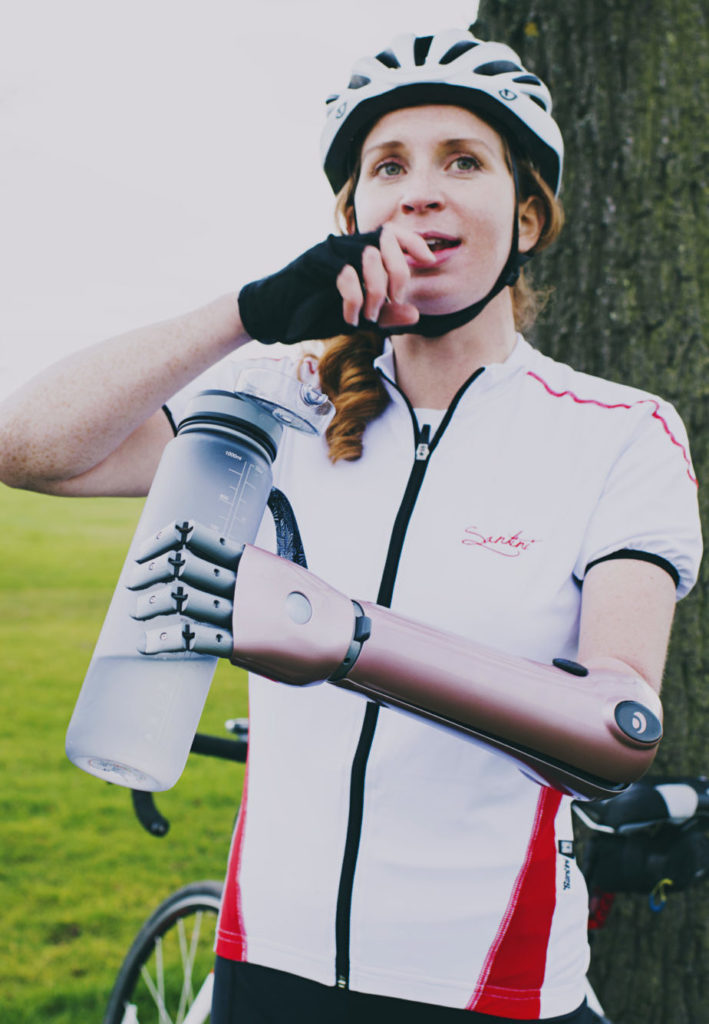
Hero with arm
Openbionics introduces the Hero arm. Open source hardware and 3D printing for medical orthoses and the like has been developing quickly as has Openbionics.
Hot Lithography, kind of like stereolithography but then hawt.
E3D develops tool head changer print head. The ever-innovative E3D folks made a tool head changing 3D printer, an idea that everyone had but no one got around to doing.
Wipro opens a 3D printing research center. Research centers were a trend as is the fast-growing Indian 3D printing market.
Chinese researchers use SLM Solutions machines to build nuclear components. China is making higher quality parts and products and this kind of research is a good signifier of that happening in our industry as well.
GKN develops new steel for automotive applications. Two megatrends the car industry and metal printing intertwined.
Open source desktop bioprinter released by Carnegie Mellon. So far open source and DIY bioprinters have not made a lot of impact yet but this could greatly reduce the costs of bioprinting.
Raise introduces Pro 2 3D printers. Raise and others are making higher quality higher value printers with features such as cameras and build chamber temperature control this is an example of the third wave of 3D printing companies that are focusing on user experience.

Casual nerd photoshoots have been on the increase thanks to 3D printing.
Aon 3D prints with high-temperature materials. PEEK, PEI and high-temperature materials were a trend as were the high-temperature 3D printers to process them.
April
The US Naval Air Systems command predicts over a 1000 flying parts by years end.
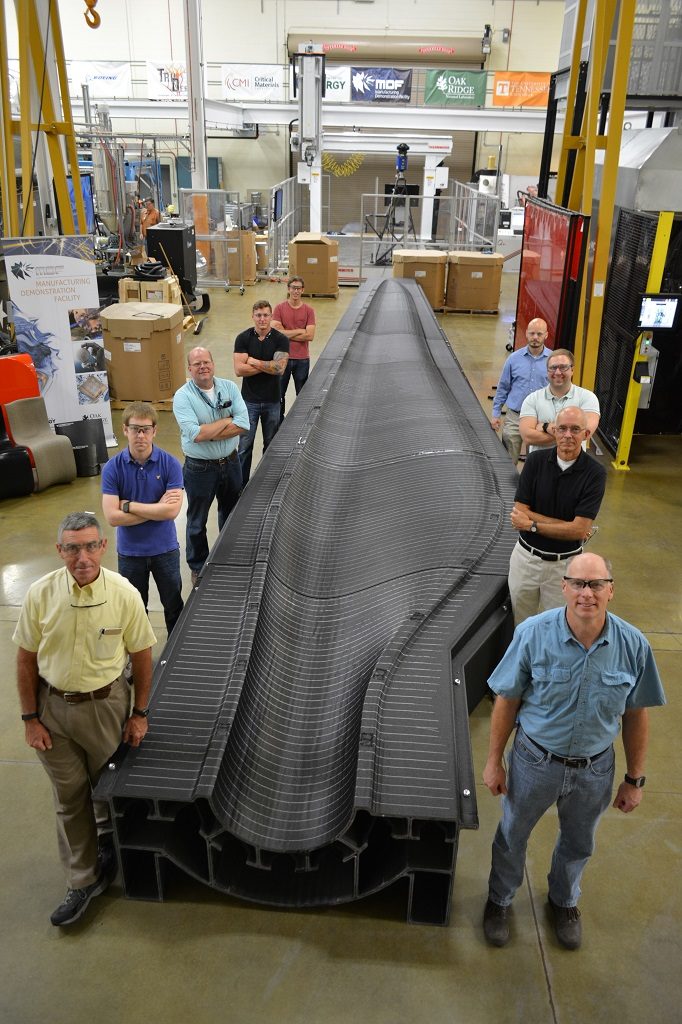
Note that all present are wearing glasses or safety glasses
Sandia works on wind turbines. Sandia has played an outsized role in the development of 3D printing and now is moving more to large format applications.
Jabil introduces a manufacturing network. Large companies trying to engage with 3D printing is a definite trend as is Jabil’s fundamental approach to adopting 3D printing internally.
Cellulose used as 3D printing material. Cellulose was explored a few times this year but was part of a much bigger sustainability trend.
4D printing self-folding objects is also something that persists.

“I’d never leave you not for Jessica or that cute Aon guy”
DSM partners with Ultimaker and introduces materials. Yet another large material company entering the market in a strong way.
ANSYS introduces new simulation tools for 3D printing. ANSYS and Materialise both were hard at work releasing simulation software to speed up 3D printing workflows.
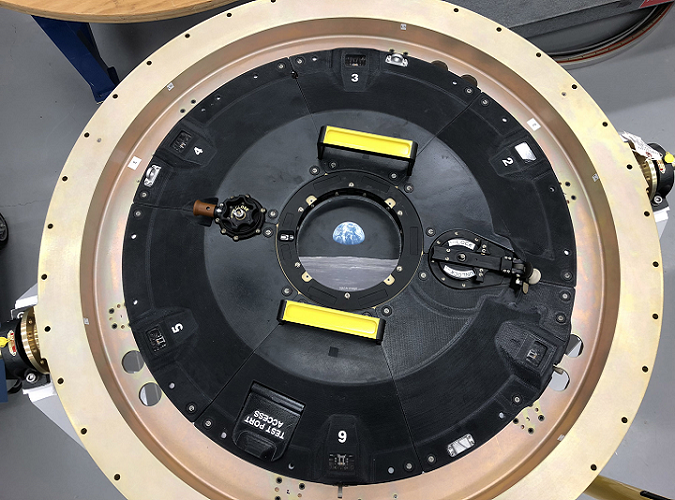
The Orion Spacecraft uses Stratasys Antero 800NA (PEKK) to make an intricately-connected 3D printed docking hatch door. Note the photo in the center with the earthrise on it.
Stratasys makes parts for the Orion spacecraft. Polymers in space? Yes we can.
Stratasys introduces PEI and Carbon Fiber optimized systems and expanded software. Stratasys spent a lot of time optimizing its systems for particular end use parts and applications while expanding GrabCAD.
EOS makes a machine for Boeing.
May
SABIC introduces new materials, another huge company expanding in 3D printing.
Biomodex and Intamsys get funding. Financing was all around this year especially for companies with business to business propositions.
Concrete houses to be 3D printed. Much of the 3D printed concrete news this year was lies, fraudulent or overclaim. If you noticed that we skipped a lot of concrete 3D printing stories, then it was because they were false. This one we verified but we still don’t know if it will work.

Solukon releases depowdering machine. Post-processing equipment to optimize 3D printing for manufacturing was a huge trend this year.
HP Shows off Multi Jet Fusion. HP’s market entry and continued investments are huge news and changing our industry.
Singapore researchers looking to recycle thermosets. Improving thermosets was a big trend as was continued investment and research in Singapore that wishes to be a 3D printing focal point.
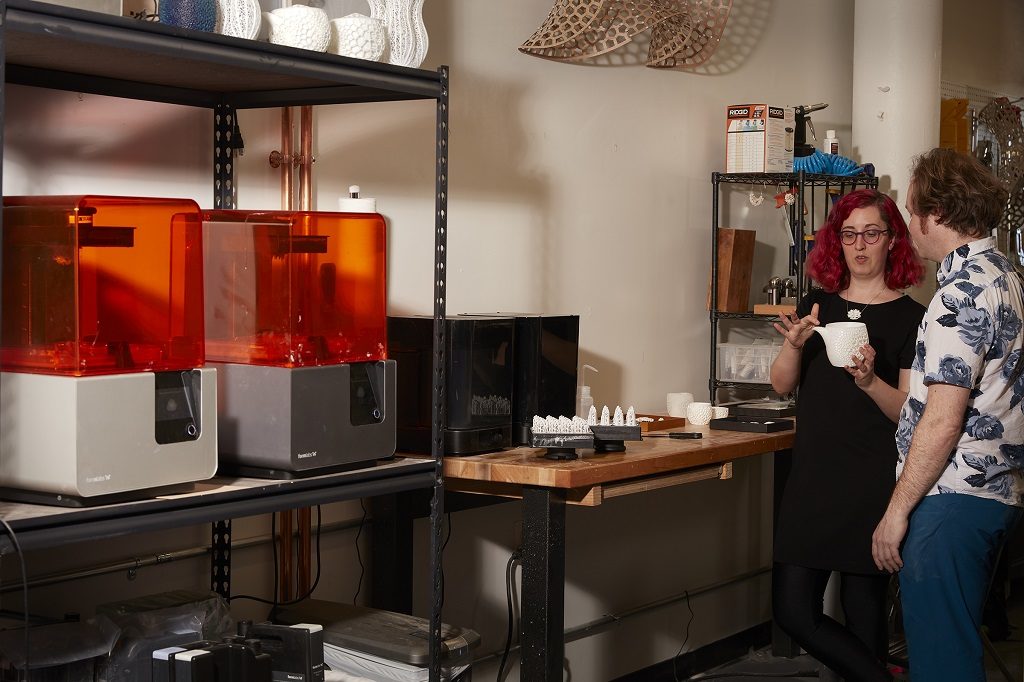
“Well yeah honey the Aon guy is cute, but I’m more a resin kind of woman.”
Formlabs introduces ceramic resins. This Formlabs development combines a trend in expanded desktop materials with that of more functional resins and that of expanded use of ceramics in 3D printing.
Titomic partners with Fincantieri. The marine sector is almost totally unexplored in 3D printing but the first real moves are happening this year.

(L-R) Dr. Steve Swioklo with Prof. Che Connon as cornea is 3D printed.
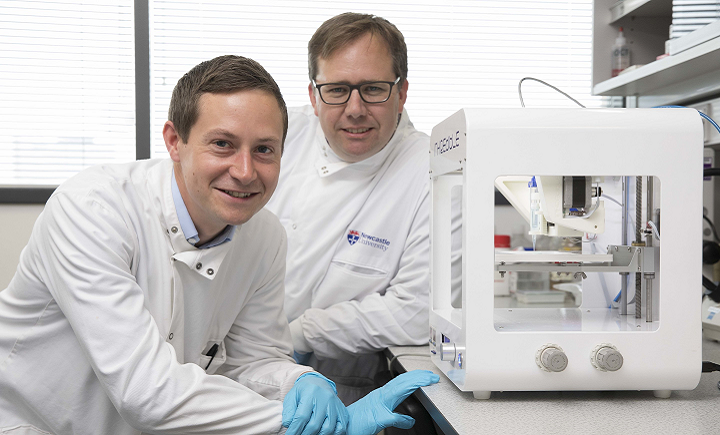

Bioink used to 3D print corneas. The development of bioinks and their expanding uses was a huge trend as well.
June
Soft robot uses shape memory. I’m a huge fan of soft robotics and think that it will change many things. Research in this area is growing.
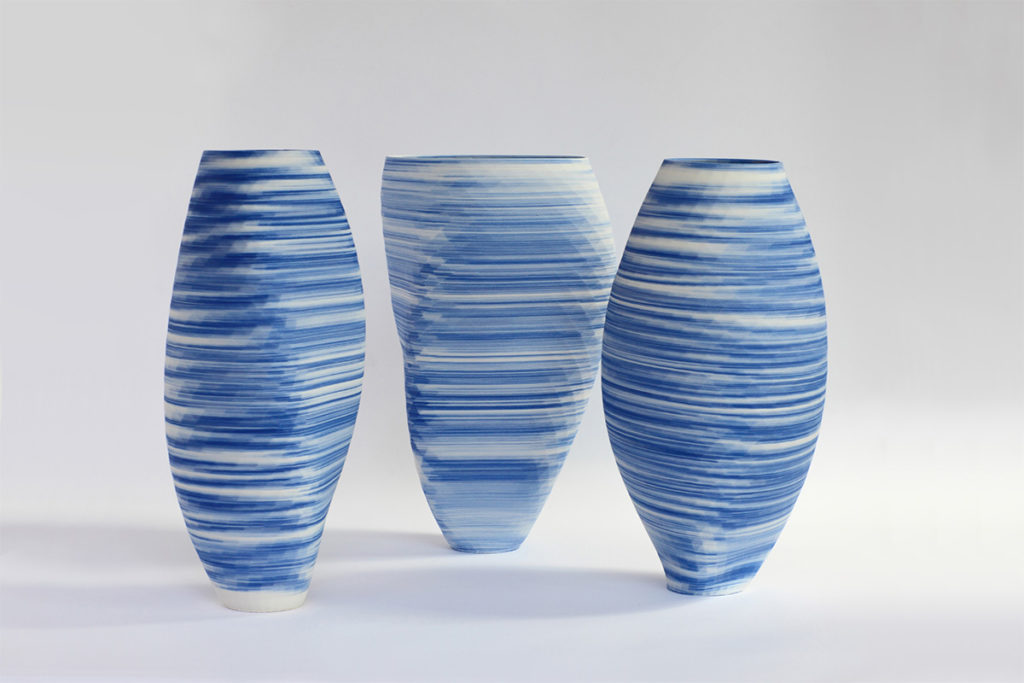
Olivier van Herpt introduces porcelain. Olivier’s highly productive ceramic printer continues to innovate outpacing the rest.
Lawrence Livermore prints a nuclear warhead. This has been going on for over a decade but its nice of them to share.
3Doodler announces new 3D printing pen. We don’t always write about 3D printing pens but millions are in the hands of consumers.
FIT and Roboze expand globally. Service bureau stalwart FIT and new player Robooze expand across the world a huge trend of expanding partnerships, resellers and offices happened this year.
Mantis shrimp inspires composite materials. Bioinspired designs were huge this year as were 3D printing composites.
Henkel and LPW expand facilities showing us real investment in thermosets and metal powders.
A postal company opens a 3D printing portal thanks to 3Yourmind. New market-entry by new kinds of players and alternatives to Materialise software are also significant trends.
July
Soft robots zigzag through sand.
This 3D printed origami fish catching device story was huge for us and encapsulates using folding in real life applications.
3D print astronauts in space, what could be cooler than that?
3D printed guns were huge this year in the media but not really in real life. So we stood against it.

3D microstructure printed on MEMS actuators. [Image: Rachael Jayne and Alice White, Boston University]
BASF also took a strategic investment in Materialise and we wondered what it meant.
There were many companies doing space-related deals at aviation shows such as RUAG and Additive Industries.
3D Printing circuits was also a burgeoning thing in 2018.
Drones were big as was using 3D printing for agriculture this story unites both.
Victrex made new PAEK materials available.
A Master’s Degree in 3D Printing? Lots of education initiatives exploded in 2018.
Printrbot closed its doors which shocked many.
3D printed bones? Lots of articles. Lattice structures? Our very own Despacito. 3D printed bone lattice structures? Hell’s yeah.
August
Nothing ever happens in August.
Satellites printed and made more lightweight were a recurring theme.
I read an awful lot of fatigue response articles in 2018.
Shapercrunch is part of a trend whereby 3D printing startups are not only in the states or Europe.
Using 3D scanning and 3D printing in museums grew a lot.
DigitalAlloys says surprise and comes out of nowhere with a new 3D printing technology.
A few years ago 3D printing chocolate was a surefire winner in terms of traffic. In 2018? Guns or 3D printing coral reefs.
Carbon nanotubes are probably a health risk.
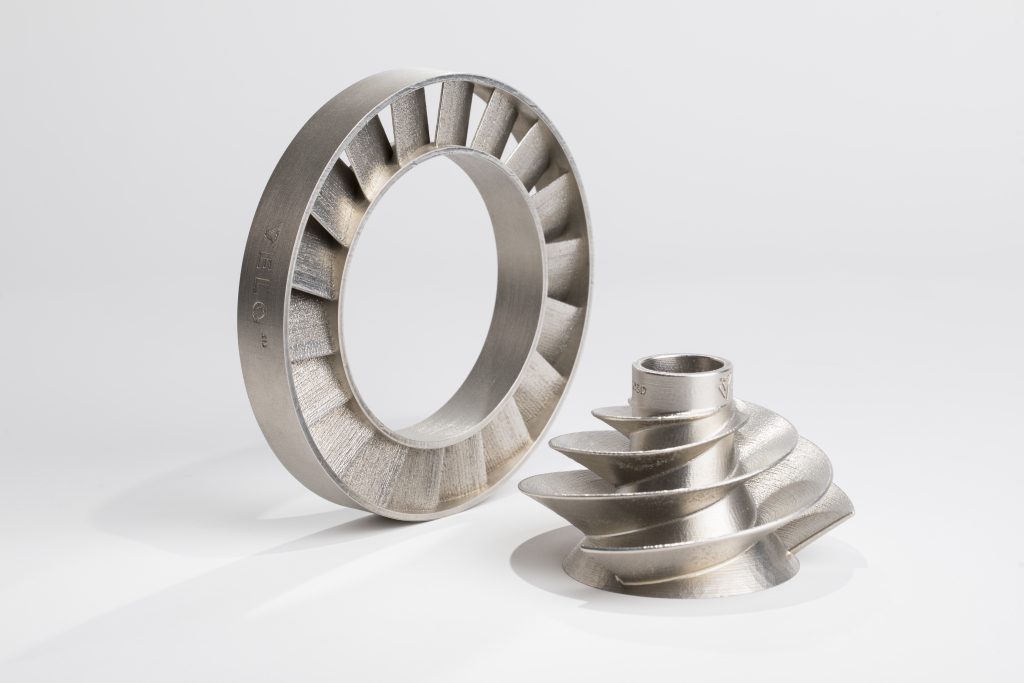
A stator ring and impeller by Velo3D
Velo3D came out of nowhere with an exciting new metal technology.
Lots of companies are working on controlling the 3D printing octagon eg controlling all of the variables including software and procedures to get better 3D printing results.
Research in hydrogel composites exploded in 2018.
We looked at where all of this 3D printing research is coming from.
Flexible thermosets/photopolymers were all the rage as well.
September
Metrology, QA and parts measurement were quickly growing activities.
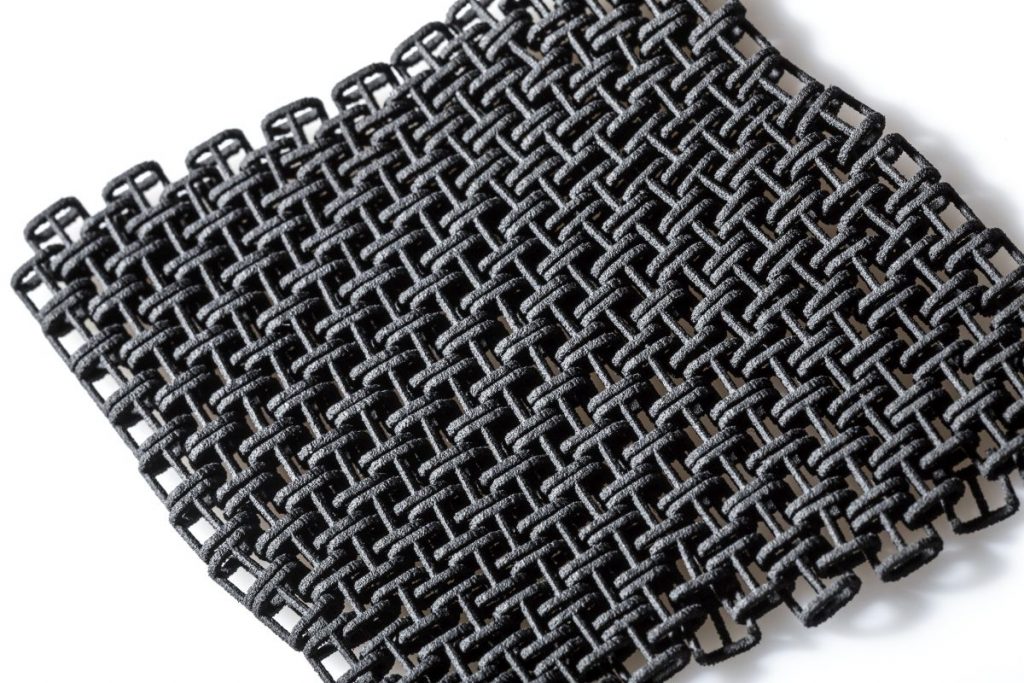
With Xaar joining the fray, the hype around binder jetting metal 2018 could be the year of the inkjet.
Minifactory makes a capable large expensive open FDM machine capable of PEEK and PEI. Spurned on by automotive and aerospace that is a real trend.
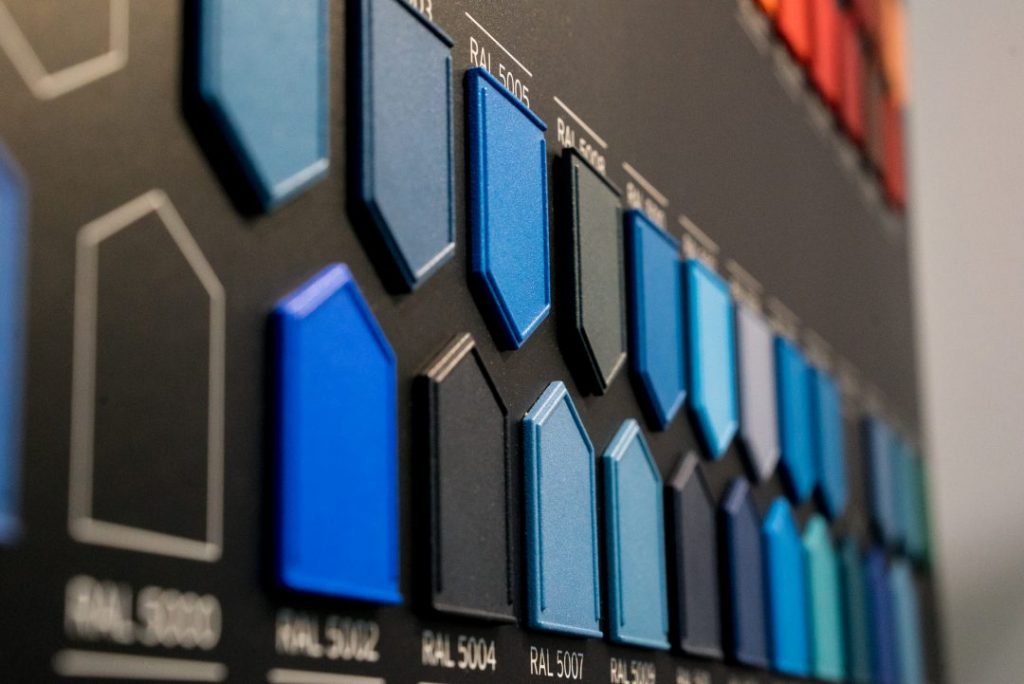
Kai Witter of Dyemansion talks costs and uses actual numbers to determine how effective their post-processing equipment is.
Everyone is always trying to control this unruly melt pool.
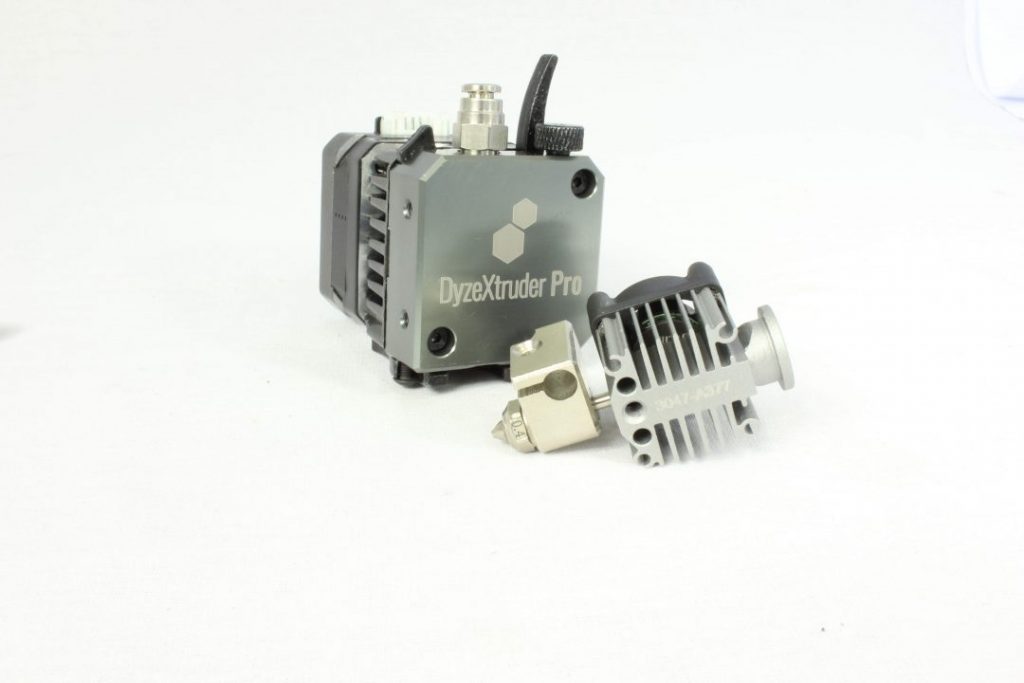
Dyze Design is part of a new group of specialized nozzle design and manufacturing companies that aim to challenge the status quo.
Lots of people wanted to 3D print silicone and ACEO spread to the US.
AddUp spins out of Michelin and starts to gobble up the French 3D printing industry.
3DHubs killed off its hubs, focuses on B2B, still confuses me.
Evolve additive spins out of Stratasys.
3DGence makes a capable high-end desktop machine.
HP to make metal 3D printers.
All that glitters is probably gold nanoparticles.
Knitting was big as was concrete.
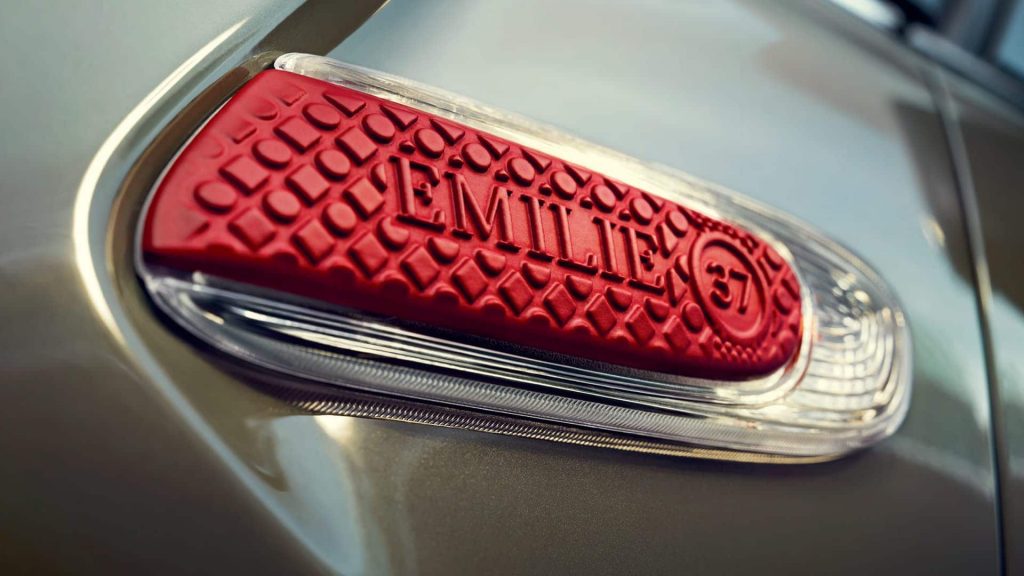
Twikit and BMW offer mass customization together.
Biodegradable medical devices such as stents were a trend.
Carpenter bought LPW postioning it for growth in high-end powder.
Consultants? 3D Printing Consultants, everywhere.
Nscrypt brought some truly amazing ideas and performance to market in bioprinting and electronics.
Xjet built an applications center to roll out its technology globally.
The Goldilocks choice faced by metal printing companies.
Using a MIG welder for a metal printer is about as low cost as we can imagine it.
November
Qualifying aerospace brackets, a multi multi million dollar priority for many.
This hybrid open die forging and DMLS technology still blows us away.
Electrically conductive filament printed on desktop machines was happening a lot.
Bioassemblybot wants to use contour printing to print directly onto people.
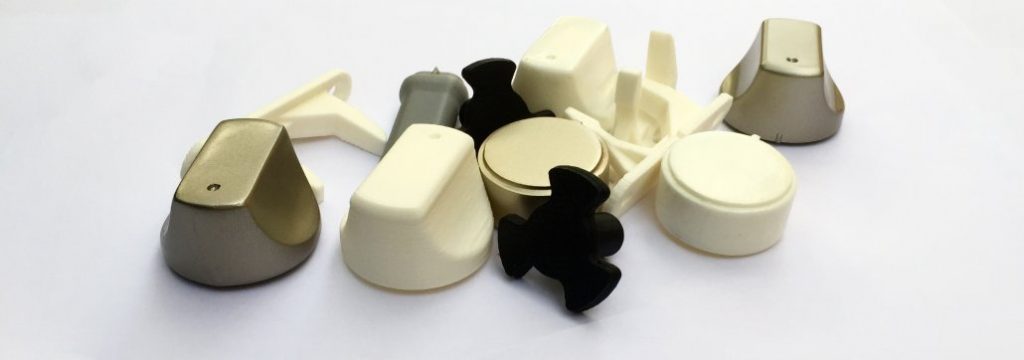
Spare parts for my washing machine? Finally. Collective mic drop, we’re done now.
In-cabin 3D printing for aviation was growing.
Happily, there was more research into the air quality of 3D printing.
3D printing meat and other foods was growing but will explode in 2019.
Essentium was another well-financed startup with a highly productive technology.
The AutoAdd project showed us that car manufacturing and 3D printing can be a reality.
LSS’s new Airbus based sintering technology showcases the minitrend that 3D printing maintenance companies are providing innovation in sintering.
Additive Industries partners with Volkswagen.
Solvay marks another company joining our industry in force.
December
Another episode in the resurgence of sintering service organizations in 2018 is the EOS Integra machine made completely separately of all the other EOS machines.
Sadly 3D printing and the law, especially IP law was an issue this year.
Charged aerosol focusing is an interesting technology.
Operational studies and research on real parts was a growing area.
Breast cancer and cancer research using 3D printing was also a trend.
The Fraunhofer sisters did some truly amazing research this year including this.

In secret 3D printing antennae is a huge business but now people are doing public research into the area.
GE makes a big investment in 3D printing in Australia.
Optomec expands vertically in gas turbines.
Autodesk makes a large toolbox.
I hope that you’ve had a wonderful 3D printing year and wish you another!
Subscribe to Our Email Newsletter
Stay up-to-date on all the latest news from the 3D printing industry and receive information and offers from third party vendors.
You May Also Like
New Report: Semiconductor Industry to See $1.4B in 3D Printing Revenues by 2032
“The semiconductor sector has become the most strategically significant area of global industry.” Truer words are hard to come by when it comes to the modern world, and they are...
Will Photonic-Crystal Lasers Revolutionize 3D Printing?
Powder bed fusion (PBF) for metals and polymers predominantly utilizes lasers as the primary heat source. Some directed energy deposition (DED) technologies also employ lasers, while various vat polymerization methods...
3D Printing Unpeeled: Orbex Investment, IndoMIM and HP, Ultrasonic Waves
INDO-MIM has bought three HP Metal Jet S100 printers, operating two in India and one in Texas. This is a win for HP because the company has deep experience in...
3D Printing Webinar and Event Roundup: April 21, 2024
It’s another busy week of webinars and events, starting with Hannover Messe in Germany and continuing with Metalcasting Congress, Chinaplas, TechBlick’s Innovation Festival, and more. Stratasys continues its advanced training...































